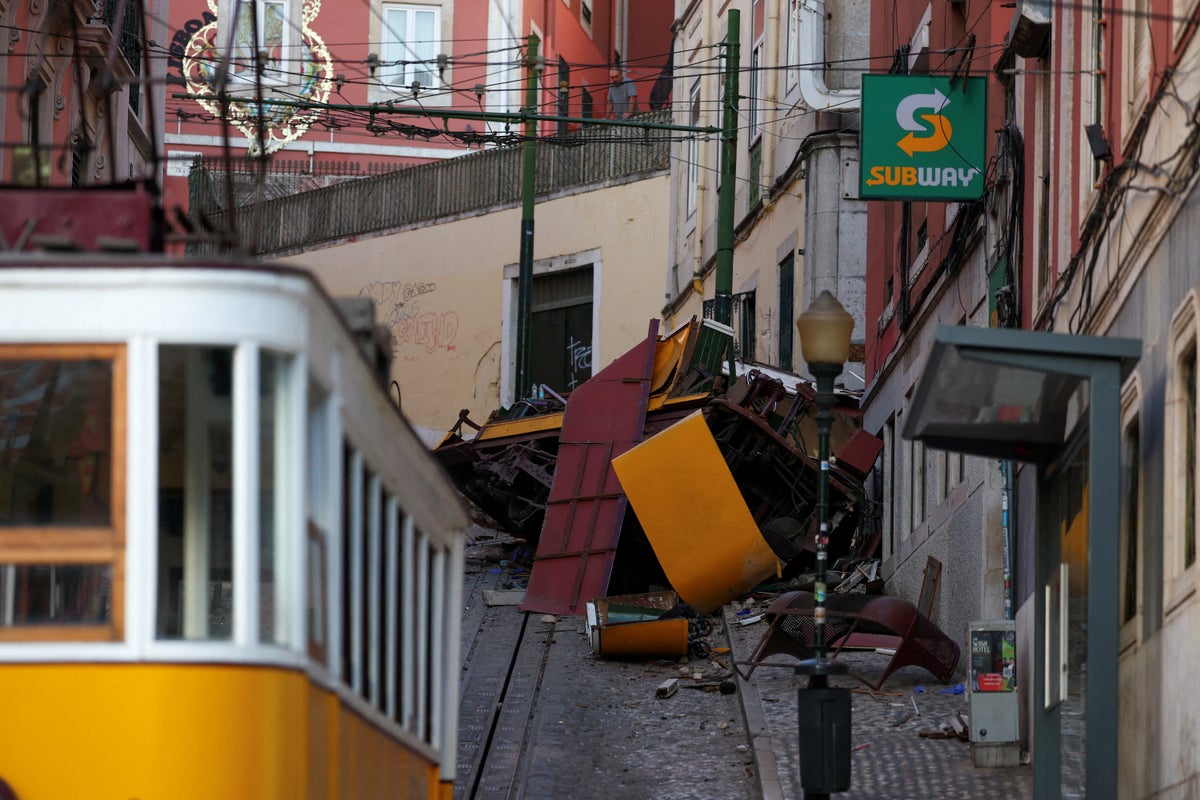Lisbon is mourning 17 people who were killed in a crash of a picturesque hillside streetcar popular with tourists on Wednesday.
The yellow-and-white streetcar – one of Lisbon’s major tourist attractions – travels up and down a steep downtown hill in tandem with another going in the opposite direction. It was seen lying on its side on the narrow road it travels along.
Nearly 21 people, including children and foreign nationals, who suffered injuries were taken to hospital, rescue authorities said.
The tram-like funicular’s sides and top were partially crumpled, and it seemed to have crashed into a building near a bend in the road. Authorities described it as the worst accident in the capital’s recent history.
Several dozen emergency workers attended the scene but most stood down after around two hours.
Lisbon mayor Carlos Moedas told reporters at the scene that the city was distraught over the incident. “This was a tragic accident,” he said. “It’s a tragedy of the like we’ve never seen.”
Flags flew at half-mast in the Portuguese capital on Thursday as people observed a day of mourning for those killed.
President Marcelo Rebelo de Sousa offered his condolences to the affected families.
What is Lisbon’s funicular railway?
The funicular, known as Elevador da Gloria, is harnessed by steel cables and goes up and down a steep downtown hill. It can carry more than 40 people, seated and standing, and is commonly used by Lisbon residents and loved by tourists.
The service up and down a few hundred meters of a hill on a traffic-free curved road was inaugurated in 1885. It connects Lisbon’s downtown area near the Restauradores Square with the Bairro Alto, which is famous for its vibrant nightlife.
It is one of three funicular lines operated by the municipal public transport company Carris. The company said in a statement that “all maintenance protocols have been carried out”, including monthly and weekly maintenance programs and daily inspections.
The other funicular lines – Bica and Lavra – in central Lisbon have several steep hills, but Gloria is the most popular, especially among tourists, due to its location. The funicular cars are all painted a distinctive yellow, similar to Lisbon’s trams.
The Gloria line transports around 3 million people annually, according to the town hall.
Its two cars are attached to opposite ends of a haulage cable with traction provided by electric motors on the cars that counterbalance each other. The car at the bottom of the line was apparently undamaged but video from bystanders aired by CNN Portugal showed it jolting violently when the other one derailed and several passengers jumping out and people shouting.
The line initially used a water counterweight system and then steam power before being electrified in 1914, with overhead cables powering the motors. Years later, in 2002, the railway was registered as a national monument.
There are two long wooden benches along an aisle with backs to the windows, all on the same horizontal level, and the base of the car is taller on the bottom end to compensate for the slope gradient of some 17 per cent, according to Reuters.
The two identical cars on the Gloria route, numbered 1 and 2, were built by the German company Maschinenfabrik Esslingen.
The route is 265m long on a double-rail track with a 90cm gauge and a central slot for cable connection. Nearly 50 metres before the bottom end is a turn of about 30 degrees and that is where the derailment occurred.
In 2018, an undisclosed technical problem involving the cable caused a derailment, but all passengers escaped unhurt.

